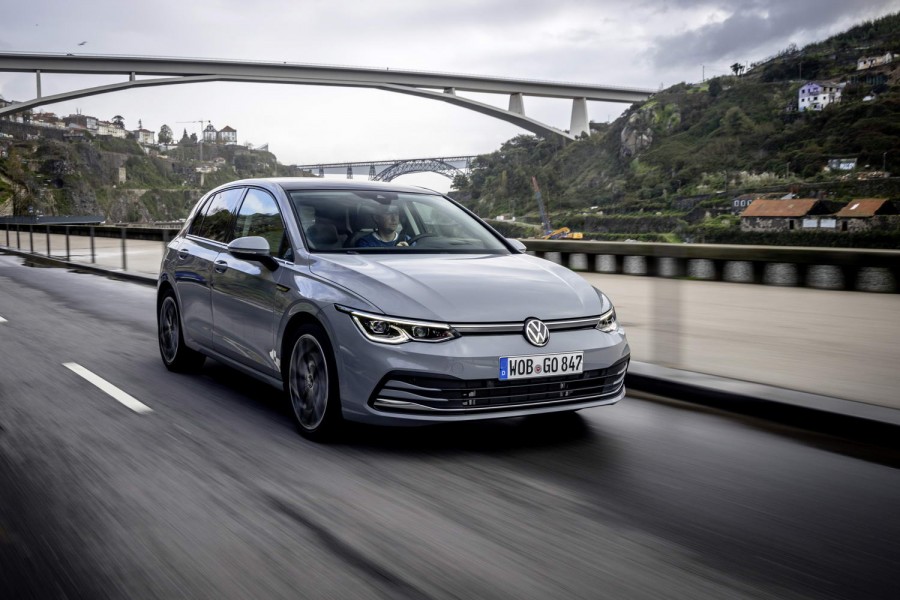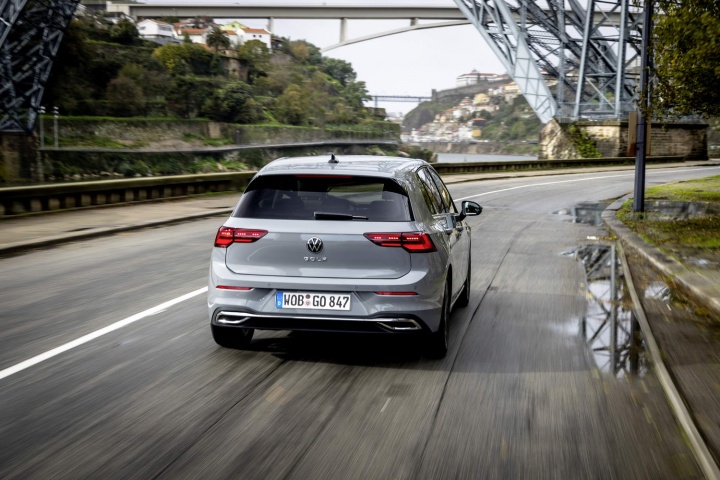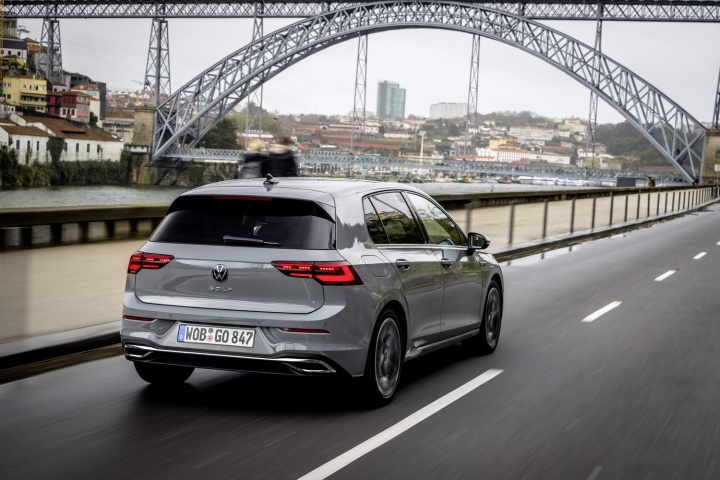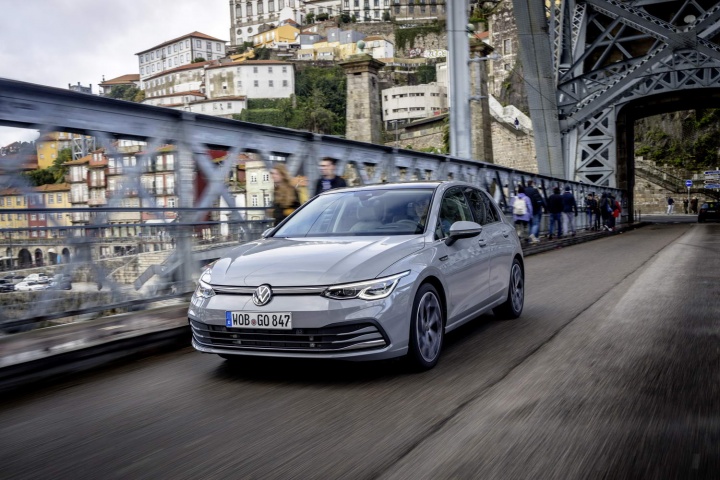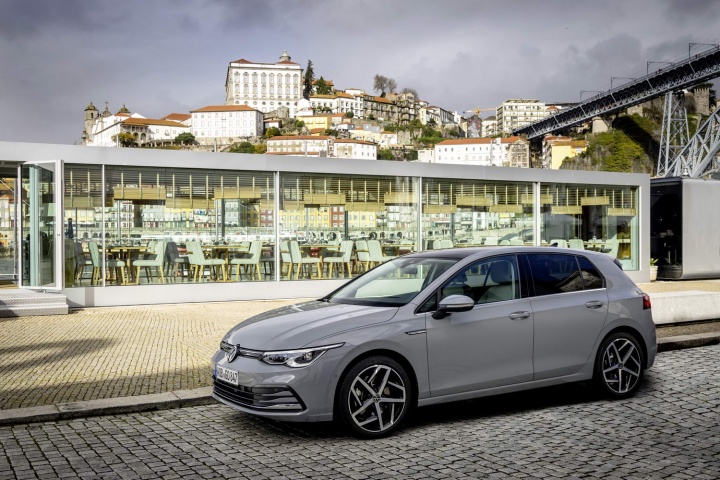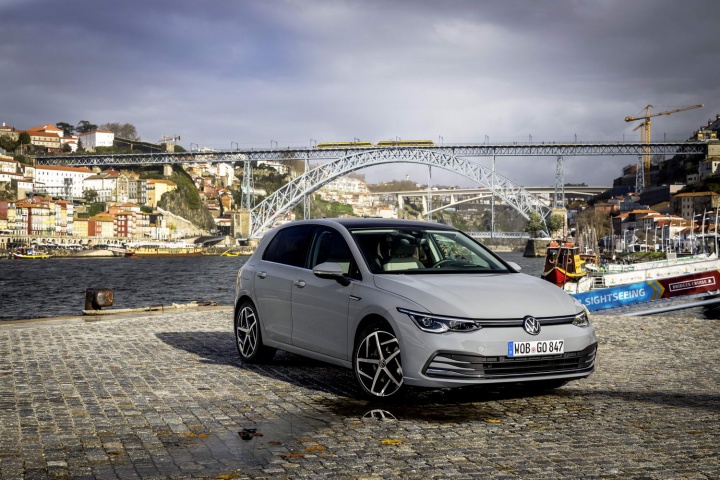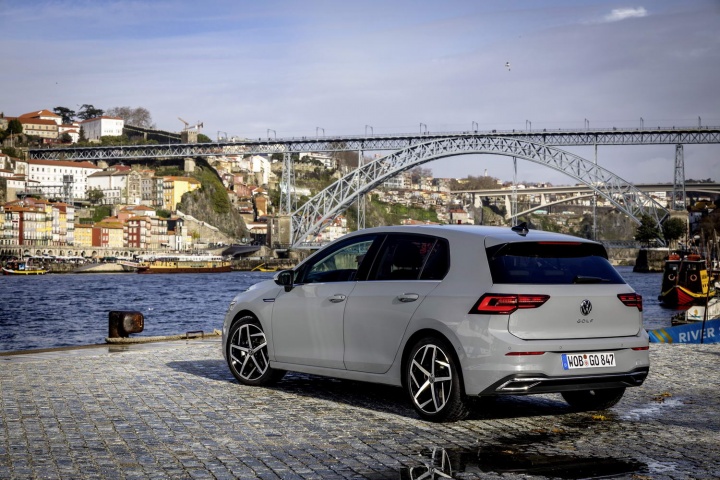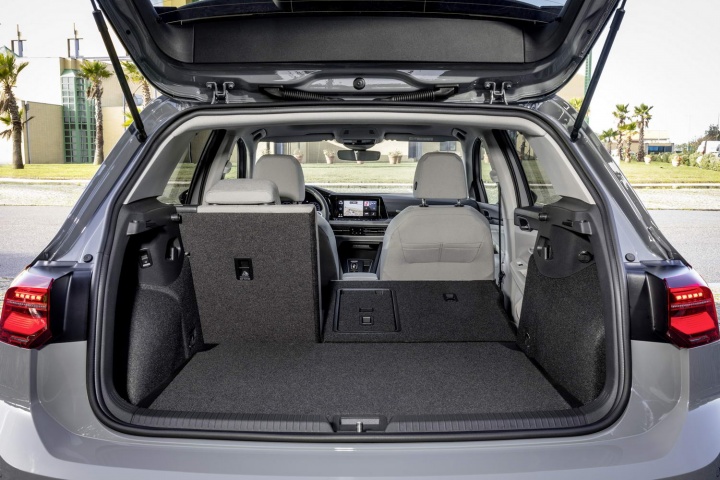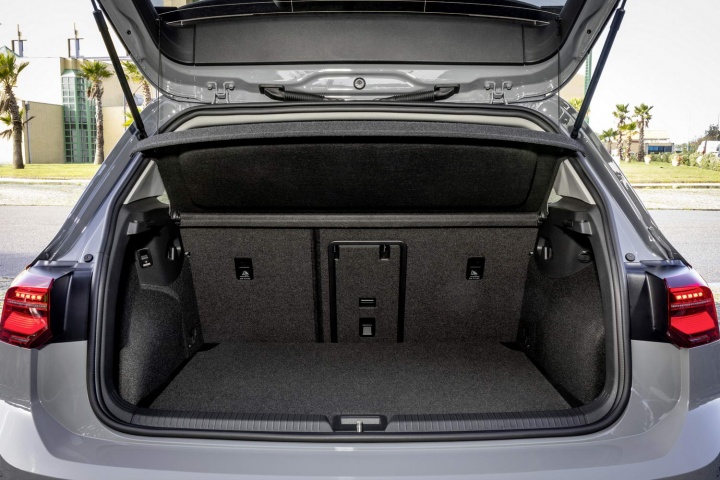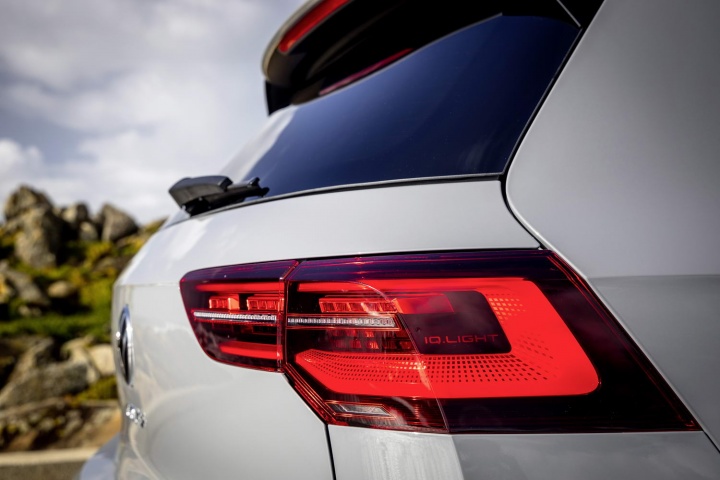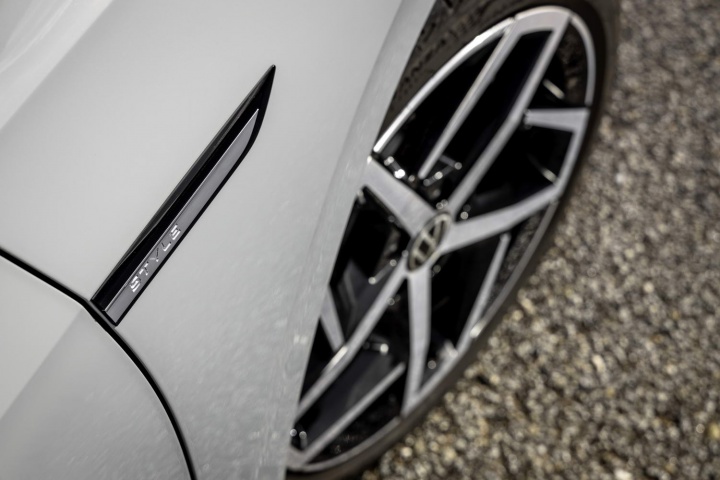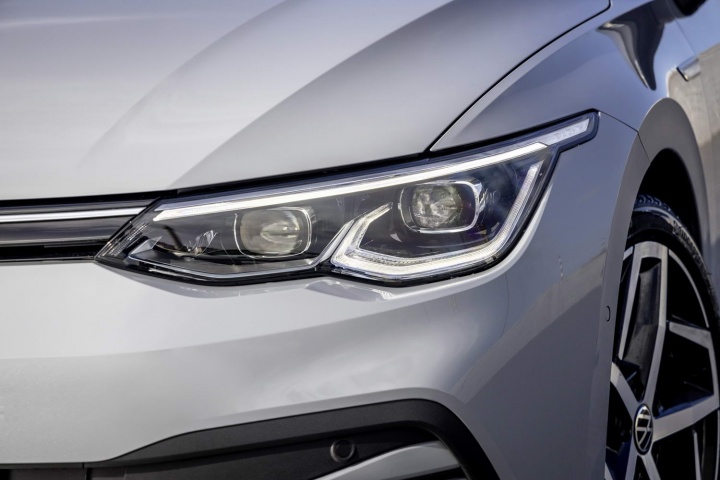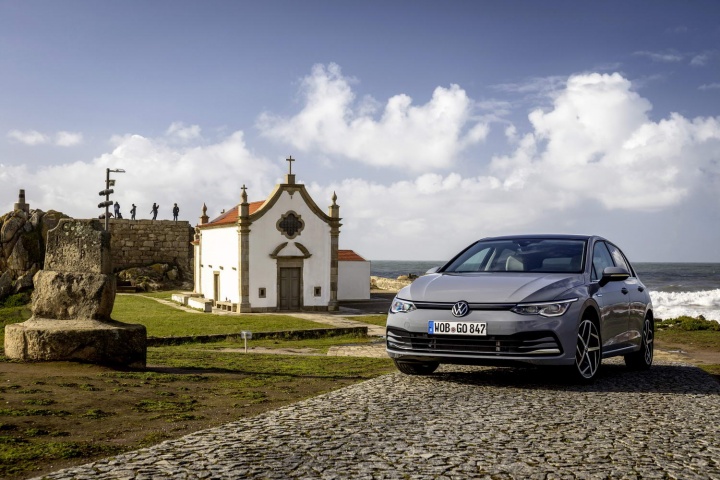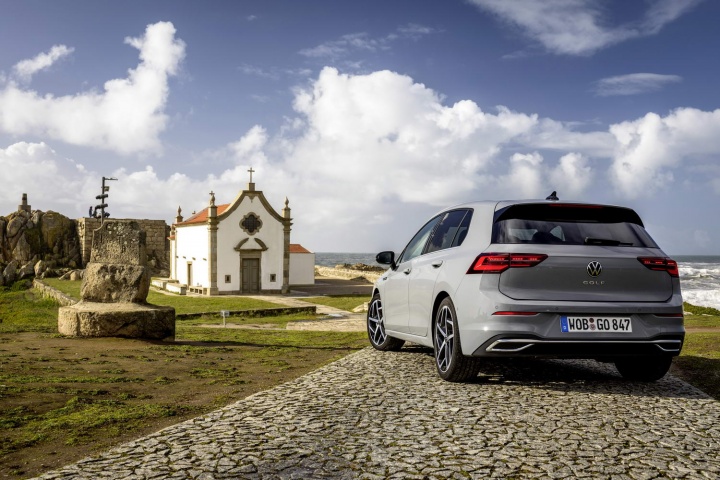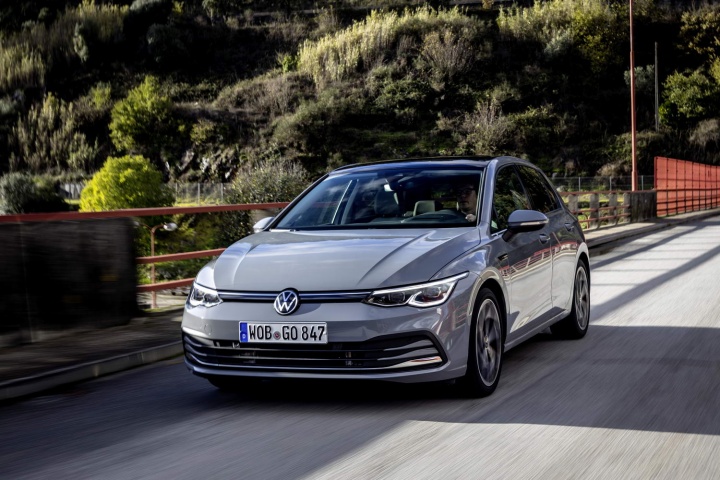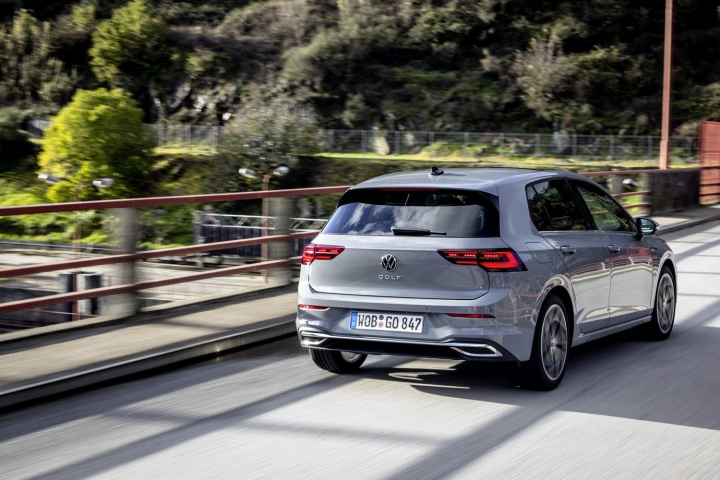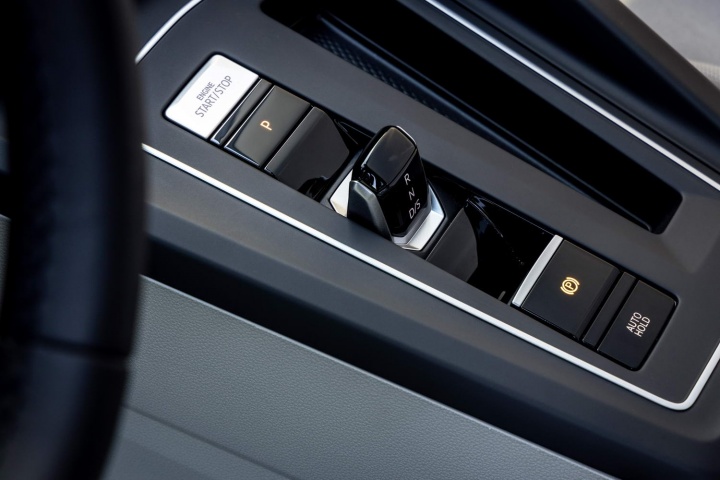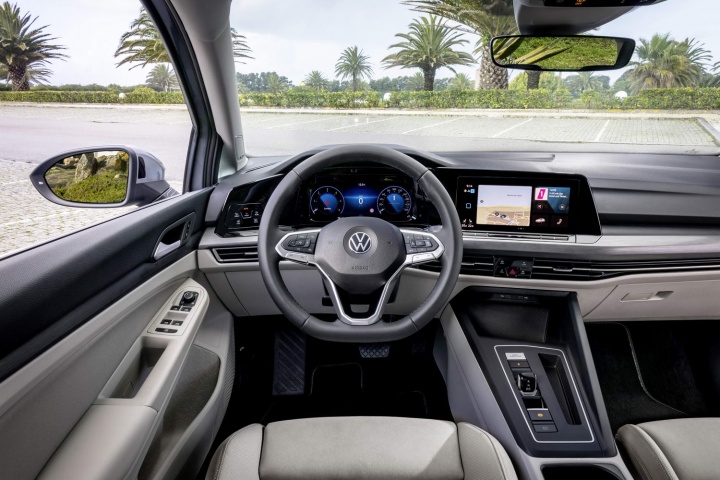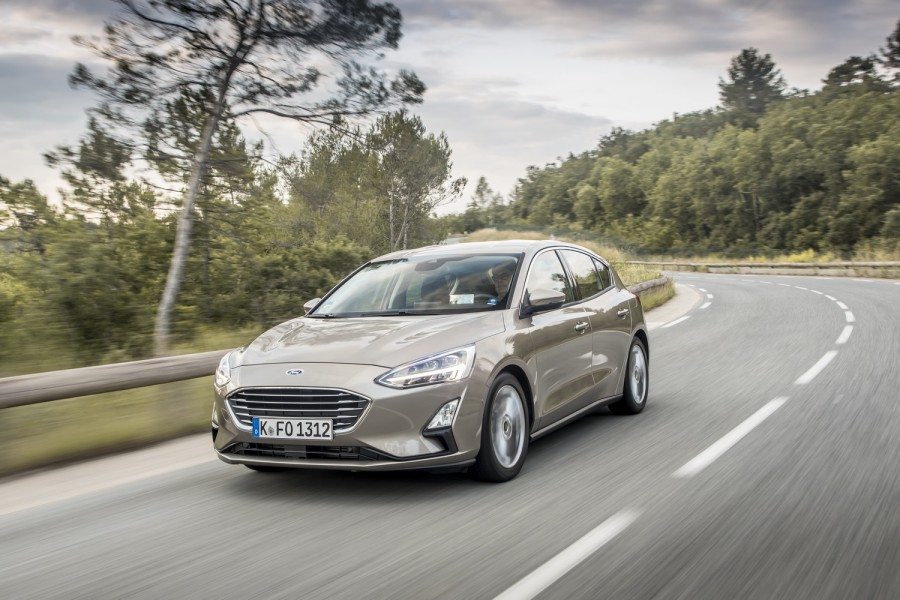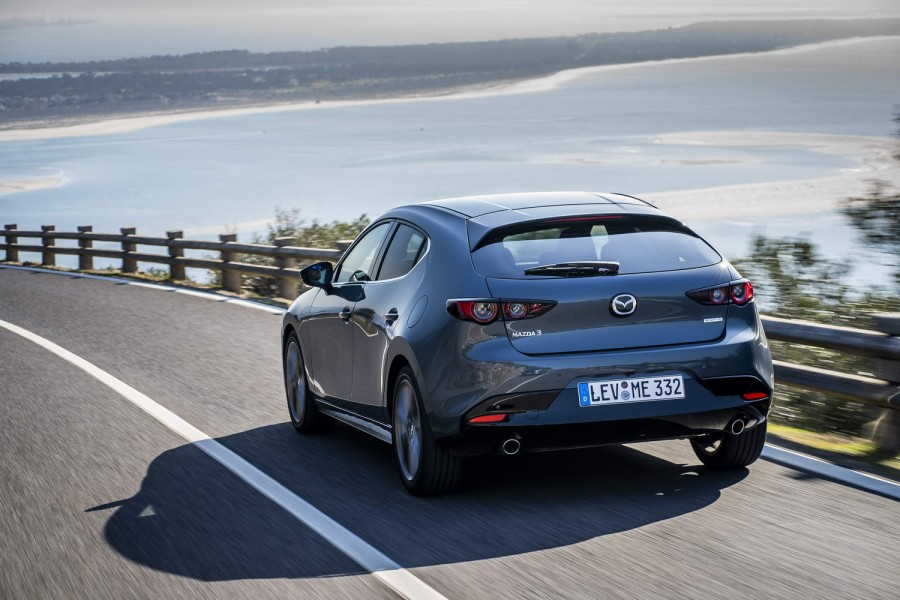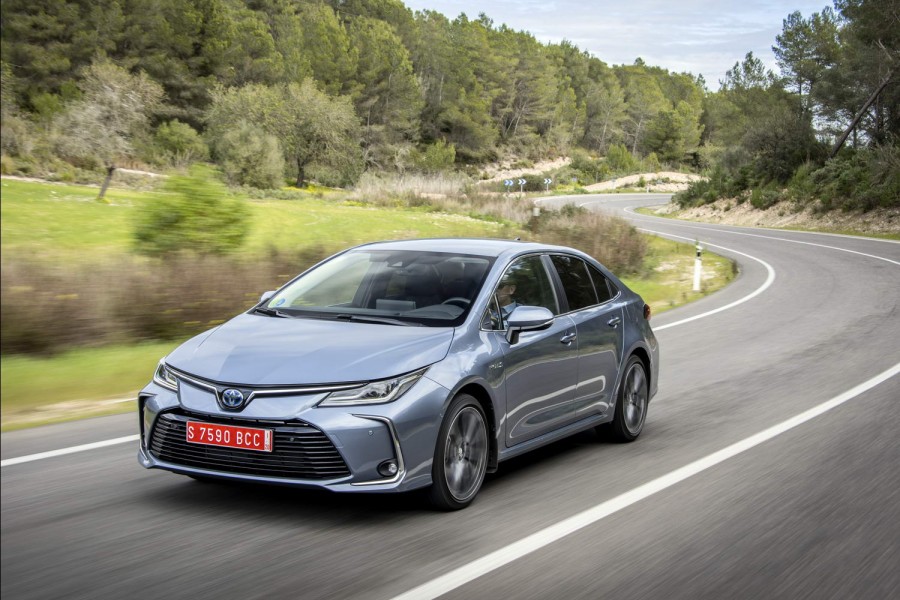Increasingly electrified (albeit with no fully electric version), the Volkswagen Golf 8 will be aiming for the Toyota Corolla's throat when it arrives in Ireland next March. Is it good enough to carry on where the excellent Mk7 Golf left off?
In the metal
Of course it looks like a Golf; did you think VW was going to take any risks with the styling of what could be one of the last generations of its legendary 40-million-plus seller? Whether it is or not depends upon how the relationship with the incoming all-electric VW ID.3 plays out, but for now, there's no mistaking this as being anything other than a Golf. Indeed, from a side-on view, there's quite a bit of mistaking it for a Mk7 or even a Mk6 Golf - the profiles are virtually identical, and the overall dimensions the same.
At the front, you'll notice a bit more change - the headlights are shapelier than before, and the radiator grille slimmed down almost to the point of not being there at all. At the rear, the brake lights are a little more chamfered than before, and both they and the headlights are now standard-fit LED units.
Step inside and you'll notice some bigger changes. While the previous Golf had already sprouted big screens and gained optional digital dials, this one gets a standard-fit 10-inch TFT screen in front of the driver, with an optional head-up display projecting onto the windscreen. More significantly, the central infotainment screen is now larger (8.25 inches as standard, 10 inches optionally) and sits higher up, blending in with the main instrument screen, rather in the manner of the Touareg SUV's interior. Sadly, there are a few bum notes here - the infotainment screen has a cheap-looking plastic surround, which, in bright lights, looks awful. On top of that, VW's quest to eliminate physical buttons from the cabin has made some functions a little more awkward than they should be, and things such as 'Gesture Control' are as useless a gimmick as ever.
On the upside, there's now a digital voice assistant (say 'Hey, Volkswagen' and ask it to do things such as inputting navigation destinations, or just turning up the cabin temperature by telling it you're cold) and if you want to go the whole trash-privacy hog, you can integrate Amazon's Alexa digital assistant into the system.
The new infotainment is impressively slick and, while (as with all such modern systems) it takes a bit of getting your head around, it's generally pretty easy to use and certainly looks impressive as it swooshes between menus. Ditto the digital instruments - slick city.
The non-digital aspects of the cabin are good too. Aside from that cheap-looking screen surround, everything else looks and feels impressively well-made, and the seats are little short of fantastic - squishy enough to feel like a favourite armchair, but firm enough to be supportive. Rear seat space is basically identical to that of the Mk7 Golf (which means it's fine) while the 380-litre boot is decent, if not class-leading.
One quibble - VW is making much of the DSG automatic gearbox's new toggle-switch gear selector, which looks cool, and is rather enjoyably tactile to use. It's supposed to free up extra storage space on the centre console, but actually, because the buttons for engine stop-start, parking brake, auto-hold and the P function of the gearbox are so large, it actually only frees up a tiny bit of space, in the shape of a small, shallow storage tray. Hardly worth the effort, even if it does look good.
Driving it
Volkswagen will launch the Golf with three key petrol engines, and two diesels - both 2.0-litre units with either 115hp or 150hp. The 1.0-litre TSI three-cylinder turbo petrol, in either 90hp to 115hp forms, will be the best-selling engine in Ireland. Unfortunately, there were none available at the launch event for us to try. Instead, VW tossed us the keys to its new mild-hybrid 1.5 eTSI Golf. This uses the familiar 1.5-litre TSI turbo petrol four-cylinder engine, married up to a 48-volt mild-hybrid system. This engine will sit alongside the standard 130hp and 150hp 1.5-litre units, and it develops exactly the same 150hp and 250Nm of torque as the standard version. Even the performance figures (8.5 seconds for 0-100km/h, 224km/h top speed) are the same.
So where's the advantage for the extra money (VW Ireland hasn't announced prices yet, but the Style version we were driving would be creeping up to €40,000)? Hmmm. That's a little hard to tell. We drove a standard 1.5 TSI and the eTSI back to back and in overall performance terms, there's really not much to separate them. Certainly, on twisty mountain roads near the Portuguese city of Porto, they felt more or less the same to drive. Both engines major on refinement, but they also pull strongly from low rpm and make a pleasant four-cylinder rasp at the top end. As for economy, VW hasn't been forthcoming with official fuel consumption figures as yet, and we were driving briskly over unfamiliar roads, so our 8.0 litres per 100km recorded figure is likely not representative.
The lower-power 1.5 eTSi 130hp and 110hp versions run on the fuel-saving Miller Cycle (named for Harry Miller, famed builder of Indycar racers and engines in the 1920s), but this 150hp version runs on a conventional combustion cycle. All versions of the 1.5 get active cylinder shutoff, to help save more fuel.
In theory, the eTSI system should work best around town, where it can activate the stop-start system earlier, and keep it on longer. It will also shut down the engine and allow you to coast for a few seconds at a time on the motorway, so VW's chosen test route was clearly not designed to show the engine at its best.
It did show the chassis at its best, though. The Golf 8 rides on an updated version of VW's ubiquitous MQB platform and, thanks to our test car having the 150hp engine, it came with the best rear suspension - a sophisticated multi-link setup, as opposed to the torsion bars of lesser models. It uses conventional McPherson struts up front, but once again, and like the Mk7, here is a Golf that does an eerily good job of combining grip, poise and comfort. No, it's not a GTI (that's coming next year, and on this basis is going to be epically good), but it turns in neatly and briskly, grips strongly with almost no understeer, even when provoked, and, thanks to the multi-link rear, keeps its rear wheels on the ground even when you hit some truly nasty mid-corner bumps.
Steering feel is slightly numb in standard mode, but weights up rather nicely when you select the Sport setting, and there's even a faint hint of steering feedback if you really concentrate. Certainly, it's more fun than any standard-spec family car has a right to be, even if ultimately it's less satisfying to steer (and how many times have we written this about the Golf over the years?) than the best versions of Ford's current Focus.
What you get for your money
Thus far, we only have indicative pricing for the Golf 8, which shows that it's going to be only fractionally more expensive than the current model, and better equipped as standard. Volkswagen Ireland is saying that, when the Golf 8 arrives in March, prices will start from around €24,900 for a basic 'Golf' spec 1.0 TSI 90hp. That's about the same as a current Trendline model, but with standard digital instruments, a bigger touchscreen, LED headlights, connected features and 'always on' internet connection, plus keyless push-button start.
The old Trendline, Comfortline and Highline versions 'are history' according to one VW bod, and they will be replaced by Golf, Life, Style and sporty-looking R-Line trims instead. Life models will start at about €28,500, while you'll be just peeping over €30,000 for a Style.
The options list will be huge, encompassing such items as automated emergency steering control, automated driver assistance systems that can control the car on the motorway at speeds of up to 210km/h, 'Car2X' communication that can 'talk' to other cars and traffic control and advice systems, a high-end Harmon/Kardon stereo, Matrix LED lights, adaptive dampers and more.
The 1.5 TSI and 2.0 TDI versions arrive first in March, with 1.0 TSI models to follow. Later next year we'll see two plug-in hybrid models arrive, with a choice of 204hp or 245hp power outputs, plus the GTI and GTD variants and then eventually the next-gen Golf R.
Summary
It's tempting to simply, at this point, write 'it's a Golf' and leave it at that. It tells you everything you need to know. VW wasn't going to take any major chances with the new Golf, but it has honed making its family five-door to a fine art. This is all the car you'll ever need, and it's as good as it ever was. The only question mark is whether it represents a big enough step forward compared to the quite-brilliant Mk7 Golf.

